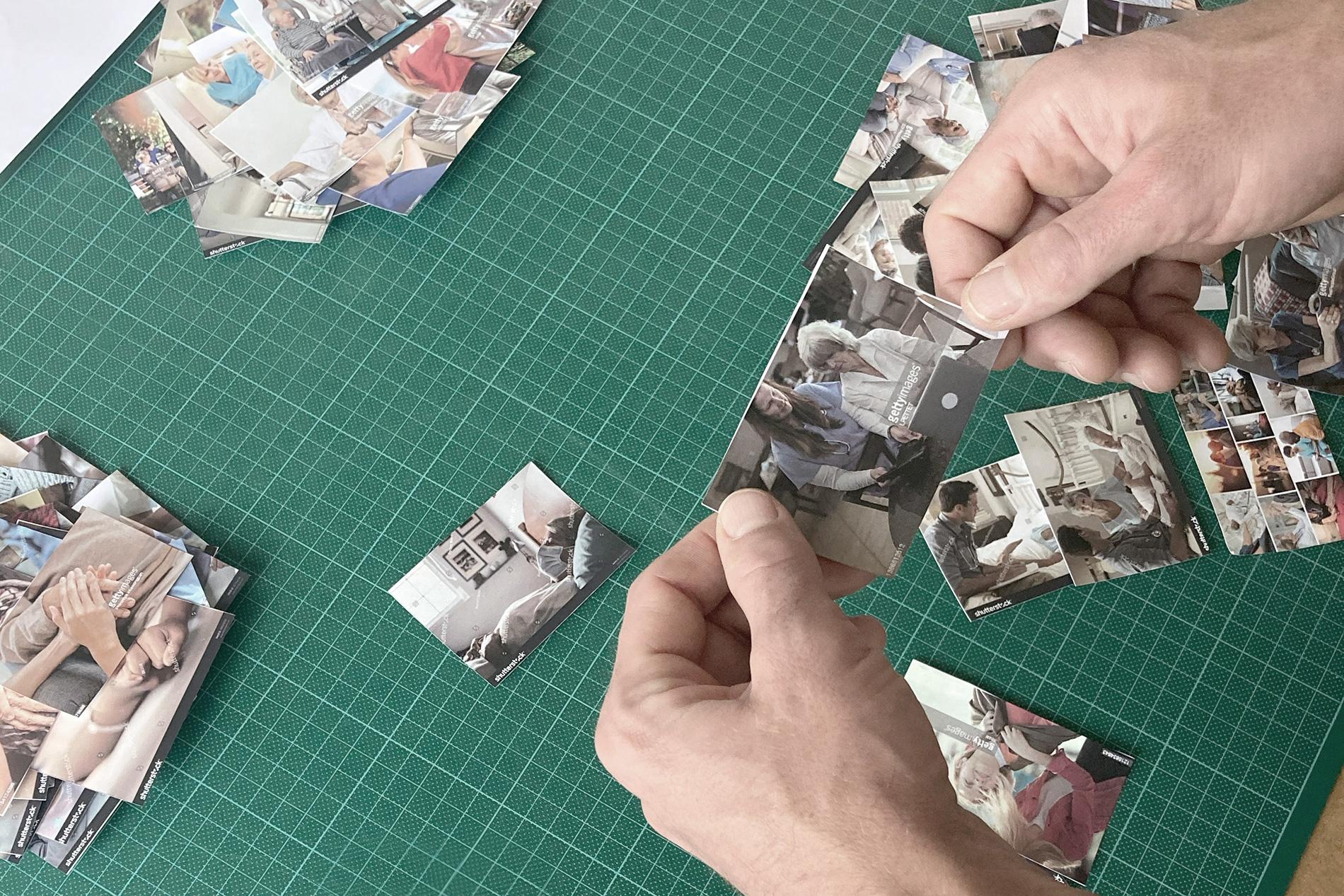Agency photos aestheticise dying

Hospices and care homes are using purchased images to advertise palliative care for terminally ill people. SNSF researchers find this problematic, as the scenes shown depict an unrealistic idea of dying.
A young carer giving a glass of water to a white-haired man. They are smiling at each other. A smooth-skinned hand holding a wrinkled hand with liver spots on top of a blanket. An older woman sitting contentedly in a wheelchair in front of a bright window. These and similar images are abundant in brochures and on websites providing information on care for seriously ill people.
However, the majority of these pictures do not show authentic situations – they are staged using photo models and then distributed by commercial agencies such as Shutterstock. This is an easy way for care institutions to obtain high-quality, attractive photos for their advertising. But other media such as newspapers and information websites also often use bought-in symbolic images.
These artificially created visuals are extremely interesting for researchers studying death and dying. “They can help us better understand the cultural and social aspects of dying,” says Gaudenz Metzger. As part of the interdisciplinary SNSF project “Sterbesettings” (settings of dying), he and his colleague Tina Braun examined these stock photographs. The two researchers criticise the fact that these images portray a stereotypical idea of dying – both in terms of the people who are looking for palliative care and of society in general.
A dignified end of life as the ideal
For their study, the researchers searched the databases of four large image agencies using the term “palliative care”. They analysed more than 600 stock photos and allocated the images shown into various categories. “We noted that the photos are highly redundant and that the imagery is reduced down to a few constantly recurring elements,” says Metzger, author of an ethnographic study on seriously ill people receiving palliative care carried out as part of the SNSF project at Zurich University of the Arts.
For example, they often depict a carer embracing a patient or holding their hand. The people receiving care usually have peaceful facial expressions and are accommodated in bright and airy rooms. In the researchers’ opinion, these scenes represent key aspects of the philosophy of the modern hospice movement – presence and empathy on the part of the care staff, dying free of pain, and the idea of death as completion and transcendence.
“They aim to tell the observer that the end of life is nothing to be afraid of,” according to Metzger. In his interpretation, the stock photos embody the ideal of a good death in palliative care. This idea of a peaceful, pain-free death surrounded by family is widespread in the western world.
Sugarcoating creates conflicts
The photos completely leave out many aspects of dying, such as grief, fear and pain. It is not obvious that the person being cared for is seriously ill and may be suffering, and the medical equipment and materials needed for the person’s care are not shown in the rooms.
“Of course it’s problematic to portray dying and death as something to be afraid of. But it’s just as problematic when it is extremely sugarcoated,” says Metzger. “The one-sided representation creates certain notions that are rarely seen in the real world.” The disappointment may lead to conflicts during palliative care provision, for example if the staff are short of time, or the rooms are not as cozy. For this reason, carers are also unhappy with the unrealistic portrayal of their work, as the researchers found out during their discussions at conferences.
They also find the stereotypical depiction of those involved troubling: the carers are usually young, attractive females. The sick people are old, white and well-dressed. “The diversity of the care staff and the terminally ill patients isn’t represented in the slightest,” according to Metzger. “Young people also die, for example.” And many older people (and men) work in care professions.
The researchers are therefore calling for a more balanced representation of palliative care that avoids stereotypes and does not leave out the more difficult aspects of the end of life. Co-author Tina Braun from Bern University of the Arts is currently working on a more nuanced visual language for her doctoral thesis – drawing ideas from design research and including different opinions from this field.